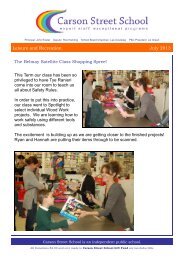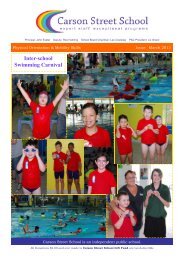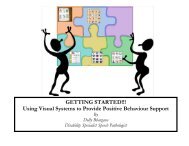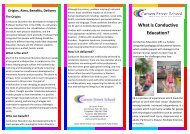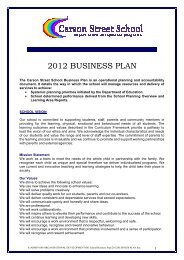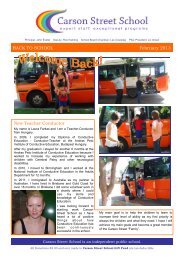What is play? - Carson Street School
What is play? - Carson Street School
What is play? - Carson Street School
Create successful ePaper yourself
Turn your PDF publications into a flip-book with our unique Google optimized e-Paper software.
Interacting during <strong>play</strong><br />
Every <strong>play</strong> interaction <strong>is</strong> made up of three phases:<br />
a) First phase greeting the child, informing them of the upcoming <strong>play</strong> activity<br />
b) Middle phase participating in the <strong>play</strong> activity<br />
c) End phase fin<strong>is</strong>hing the <strong>play</strong> activity<br />
Effective communication and interaction <strong>is</strong> necessary in each of these three phases.<br />
Following are strategies that <strong>play</strong> partners need to incorporate into their interactions<br />
when engaging in <strong>play</strong> activities with children.<br />
a)First phase<br />
• Firstly get the child’s attention before speaking: tap the child’s hand, say<br />
their name, and get down to the child’s eye level.<br />
•Stay still when talking to your child to decrease d<strong>is</strong>tractions.<br />
• Decrease background no<strong>is</strong>e, especially for children with hearing loss.<br />
Turn off music, TV, no<strong>is</strong>y appliances, close windows and doors.<br />
• Use v<strong>is</strong>ual cues such as gestures, signs, showing objects, photos, computer<br />
line drawings as well as speech to let your child know its <strong>play</strong>time.



